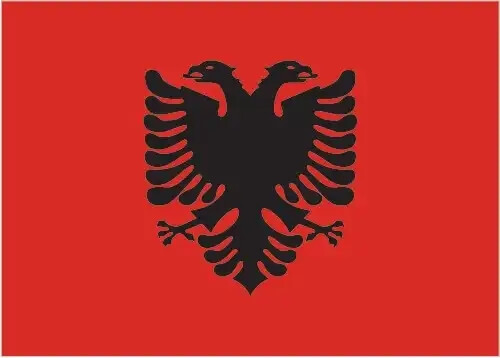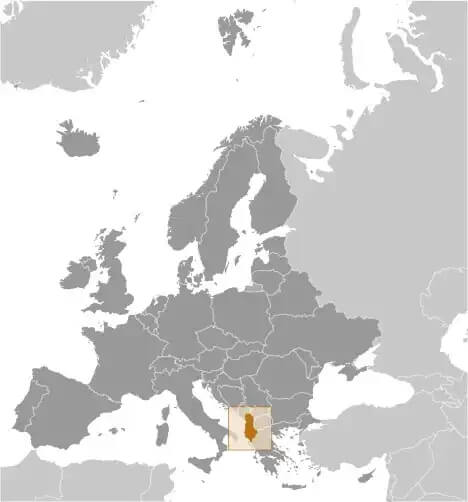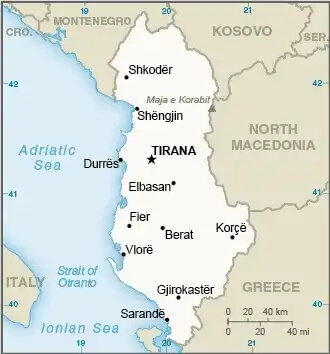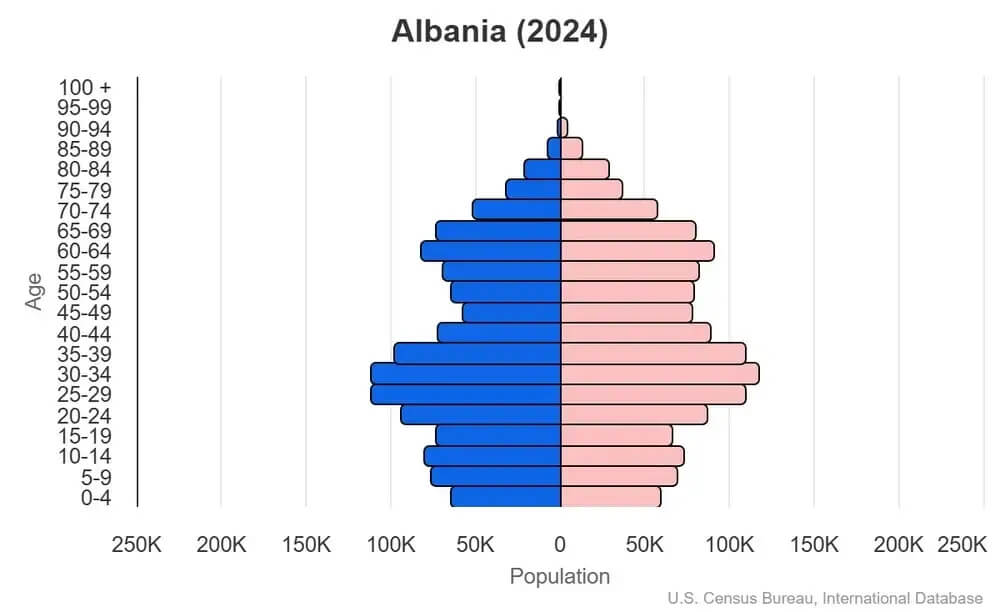World Book
Albania
World Book Index
69


With a score of 69, the country is ranked 64th out of 158 countries in the World Book ranking. (more information)
Introduction
Background
Albania declared independence from the Ottoman Empire in 1912, but Italy conquered it in 1939 and Germany occupied it in 1943. Communist partisans took over the country in 1944, and Albania allied itself first with the USSR (until 1960) and then China (until 1978). Now a multiparty democracy, Albania joined NATO in 2009 and became an official candidate for EU membership in 2014.
Geography
Area
total : 28,748 sq km
land: 27,398 sq km
water: 1,350 sq km
Climate
mild temperate; cool, cloudy, wet winters; hot, clear, dry summers; interior is cooler and wetter
Natural resources
petroleum, natural gas, coal, bauxite, chromite, copper, iron ore, nickel, salt, timber, hydropower, arable land
People and Society
Population
total: 3,107,100 (2024 est.)
Ethnic groups
Albanian 82.6%, Greek 0.9%, other 1% (including Vlach, Romani, Macedonian, Montenegrin, and Egyptian), unspecified 15.5% (2011 est.)
Languages
Albanian 98.8% (official - derived from Tosk dialect), Greek 0.5%, other 0.6% (including Macedonian, Romani, Vlach, Turkish, Italian, and Serbo-Croatian), unspecified 0.1% (2011 est.)
Religions
Muslim 56.7%, Roman Catholic 10%, Orthodox 6.8%, atheist 2.5%, Bektashi (a Sufi order) 2.1%, other 5.7%, unspecified 16.2% (2011 est.)
Population growth rate
0.16% (2024 est.)
Government
Government type
parliamentary republic
Capital
name: Tirana (Tirane)
Executive branch
chief of state: President Bajram BEGAJ (since 24 July 2022)
head of government: Prime Minister Edi RAMA (since 10 September 2013)
Diplomatic representation in the US
chief of mission: Ambassador Ervin BUSHATI (since 15 September 2023)
Diplomatic representation from the US
chief of mission: Ambassador (vacant); Chargé d’Affaires Nancy VANHORN (since August 2024)
Economy
Economic overview
upper-middle-income Balkan economy; EU accession candidate; growth bolstered by tourism, agriculture, mining, construction, and private consumption; fiscal consolidation through revenue collection and tax compliance enhancements to address public debt; challenges include weak governance, corruption, and high emigration rates
Real GDP (purchasing power parity)
$51.36 billion (2024 est.)
$49.403 billion (2023 est.)
$47.532 billion (2022 est.)
Real GDP per capita
$18,900 (2024 est.)
$18,000 (2023 est.)
$17,100 (2022 est.)
Exports
$9.848 billion (2024 est.)
$9.099 billion (2023 est.)
$7.057 billion (2022 est.)
Exports - partners
Italy 41%, Greece 10%, Germany 5%, Spain 5%, Serbia 4% (2023)
Exports - commodities
garments, footwear, electricity, crude petroleum, iron alloys (2023)
Imports
$11.697 billion (2024 est.)
$10.374 billion (2023 est.)
$9.016 billion (2022 est.)
Imports - partners
Italy 22%, China 11%, Turkey 9%, Germany 7%, Greece 6% (2023)
Imports - commodities
cars, refined petroleum, garments, packaged medicine, iron bars (2023)
Human Development Index
The country's Human Development Index (HDI) is 0.810, ranking it 71st out of 193 countries tested. (more information)
World Happiness Report
The World Happiness Report ranked the country 69th out of 158 countries tested with a score of 5.877. (more information)



